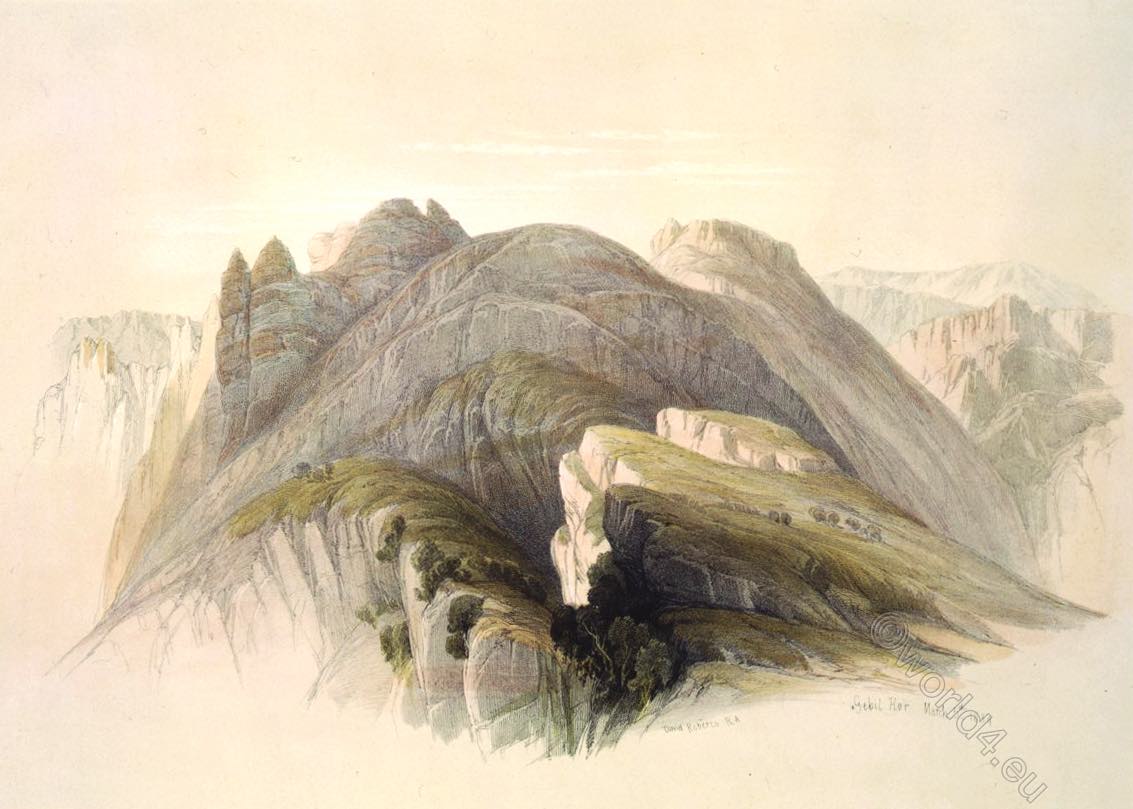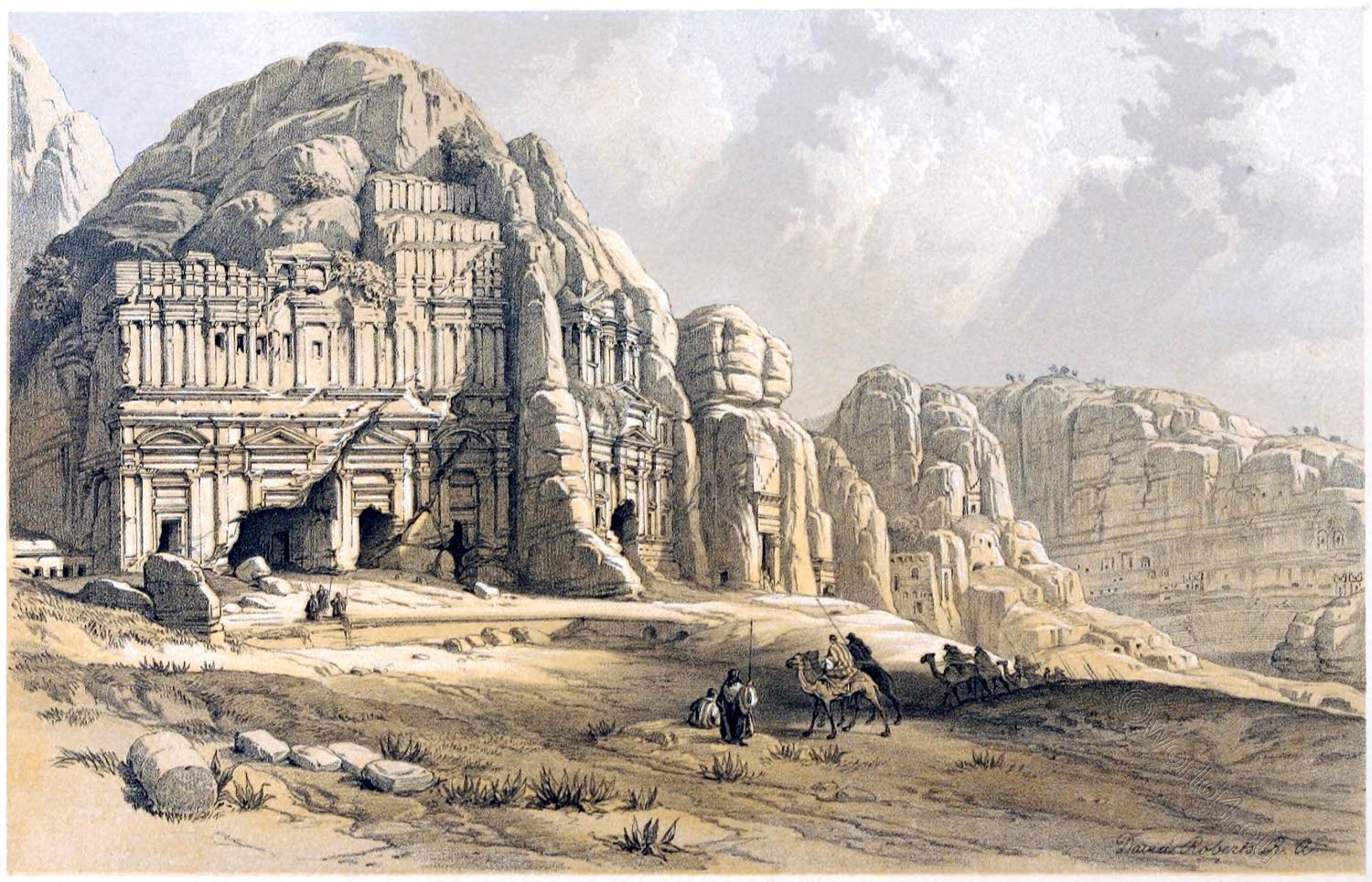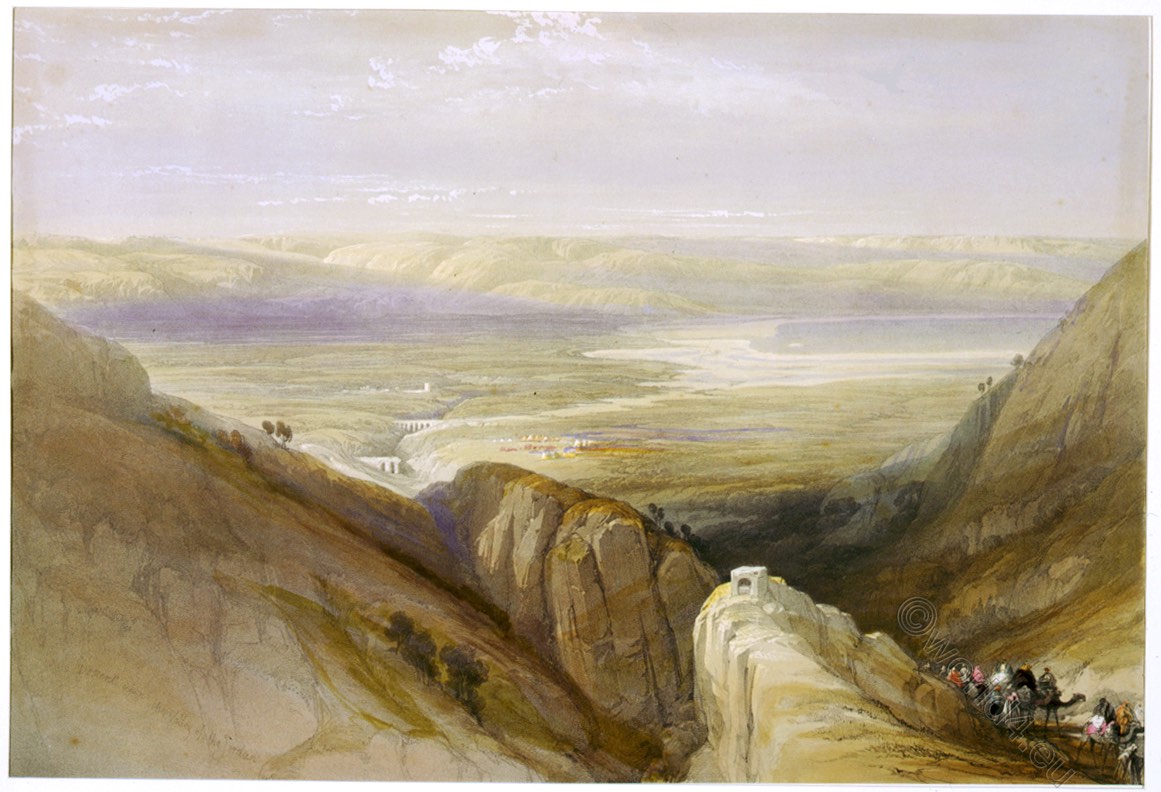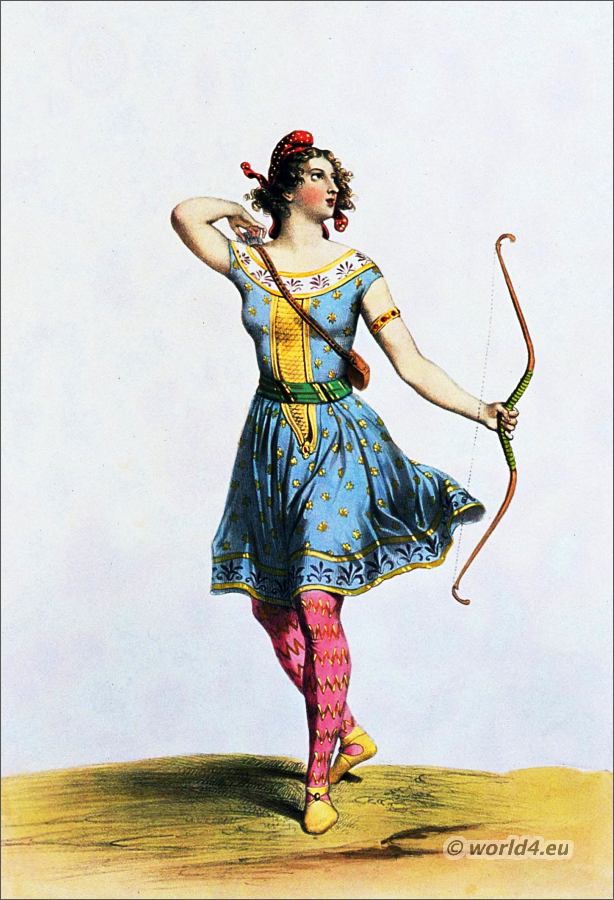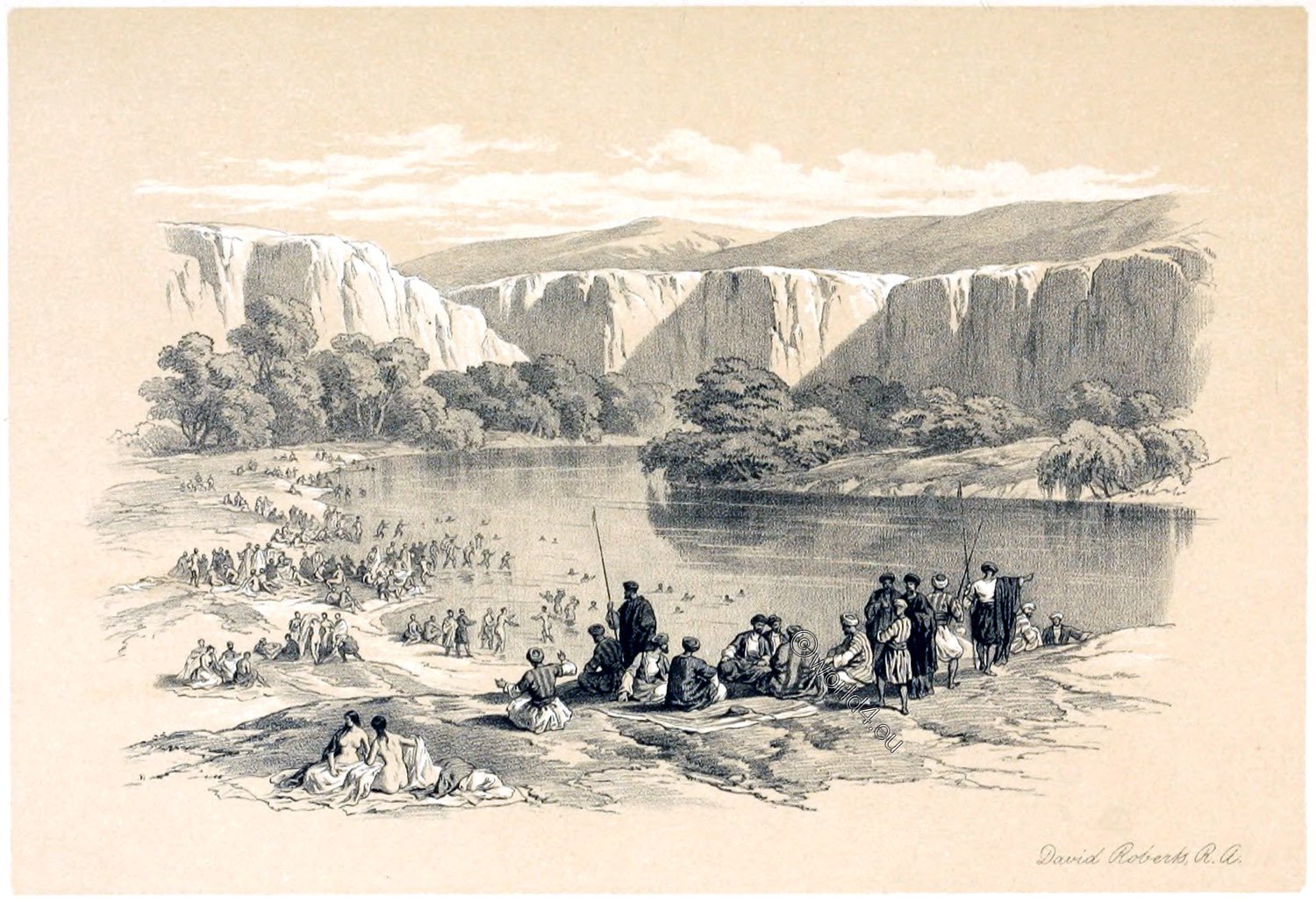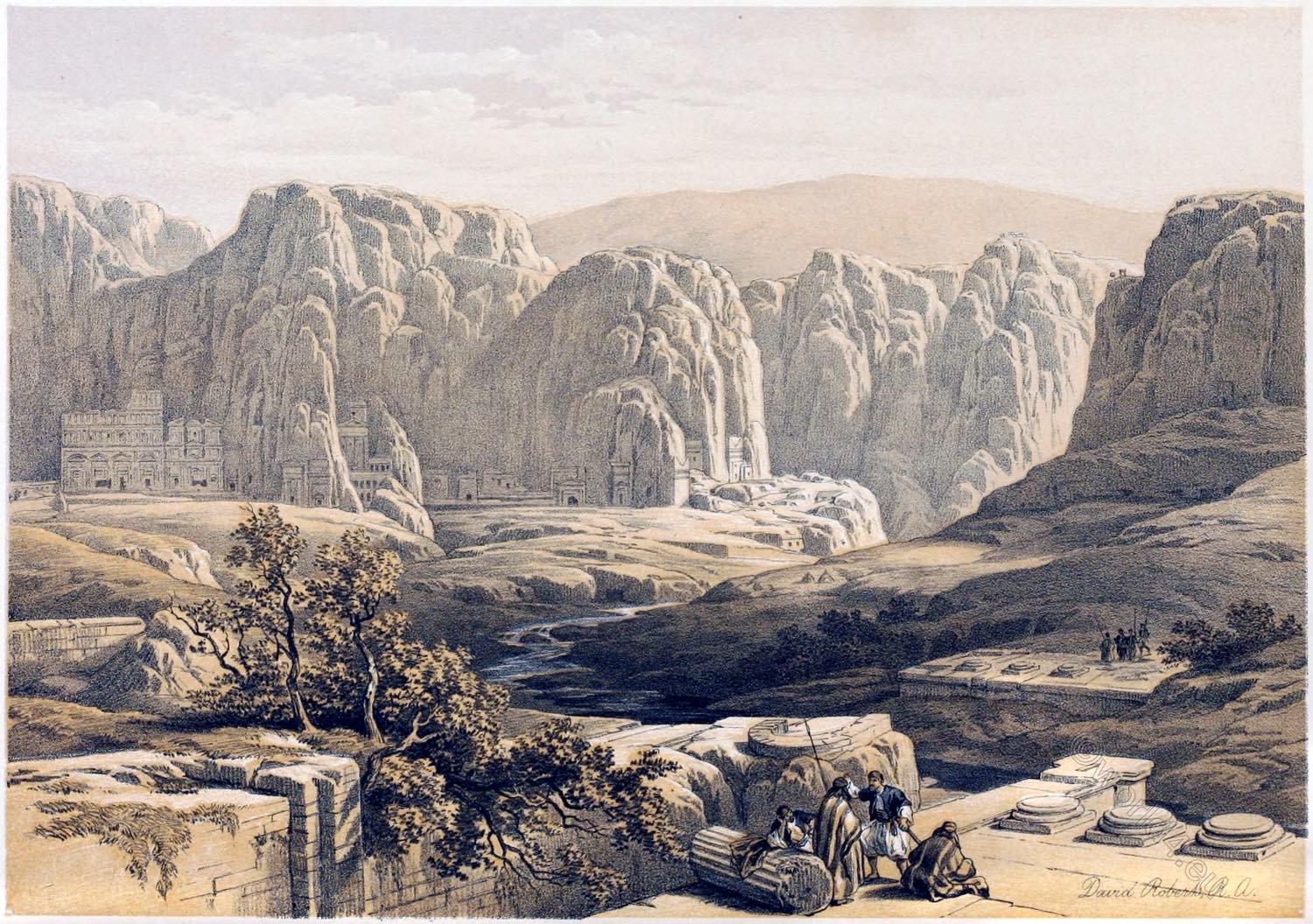
THE SITE OF PETRA
by David Roberts
This Engraving gives a general representation of the area which opens to the spectator on emerging from the “Chasm” by which he enters on the East. It shows the forms of the cliffs bounding the City on that side, with the various levels of the ground on which it stood.
The course of the stream marks the direction of probably the chief Street, or Forum, as it was evidently covered over (though the winter floods have long since forced their way through the covering); and the nature of the ruins near the stream shows that this causeway was bordered with stately buildings.
On its northern side are the remains of a Temple of large dimensions; the bases of the colonnade displaying the probable extent of its front. 1) On the southern, the site of a magnificent portico is discoverable; and at the confluence of a brook flowing from the north, with the stream, are the remnants of a circular building standing at the extremity of a broad terrace. In the bed of this brook were found the arm and shoulder of a statue, in marble, and the marble capital of a Corinthian pillar, of the purest taste, and obviously differing from the general style of Petraean sculpture. 2)
It was while the Artist and his companions were sojourning in the centre of this area (where the tents are seen), that they met the appropriate adventure of being plundered, apparently by their own escort. On the thud day of their stay, they had received a warning, in the open seizure of some of their camp-furniture, which the thief, on escaping up the precipice, flourished triumphantly over his head, promising a speedy return “for something else.” The chief of the escort pretended extreme indignation at the robbery, but the robber was not to be found. We give this little narrative in Mr. Kinnear’s words:
“The night was cloudy, with passing showers; and our servants told us, that the Alloeens, expecting heavy rain during the night, had removed to one of the large excavations in the neighbourhood. About midnight I was awakened by loud cries of’El Arab! Robbers! robbers!’ repeated in half-a-dozen voices, English and Arab. I started up; but on running out, no one was to be seen except our own party. The robbery was certainly boldly and cleverly executed. One or two of the tent-pins had been drawn on the outside. In this manner the thief had crept in, and deliberately selected such articles as were of most importance to these wild people: a pair of pistols, a bag of powder and balls, a shot -belt, and a box of wax-candles! To add to our discomfort, we could not help suspecting that Hassein himself had connived at the robbery: he had long coveted the pistols.” 3)
His removal of the guard; his requesting that the lantern should remain lighted, thereby facilitating the movements of the thief; and his own remaining in the tent, to induce them to sleep in security, were nearly proof. The adventure shows the craftiness of these “children of nature,” and how little faith is to be placed in the virtues of the Bedouin.
In closing these descriptions of Petra, it must be observed, that if its beauty and sublimity have been exaggerated, they are the exaggerations of intelligent individuals who have been upon the spot; and who have been unanimous in their admiration. It is even not improbable that some of its finest monuments remain to be discovered. The mountains cover the country; they are penetrated with chasms in all directions, and those chasms are now so choked with ruins or vegetation, that they defy the enterprise of the hurried traveller.
Yet it was in one of those chasms at the western end of the valley that the unsuspected beauty of El Deir was discovered, through fragments of fallen cliffs, and an ascent of successive terraces, reached by successive flights of steps, “one of them extending over a space of a thousand feet”
The chief obstacle, however, has existed in the extortion and ferocity of the Arabs; but a vigorous government would soon remove that obstacle: and, perhaps, no spot on earth would more amply repay a taste fitted to enjoy the noblest combinations of Art and Nature — that enlightened curiosity which takes an interest in the history of human genius — or those still higher feelings, which do homage to Providence, love to trace its solemn path through the times and trials of mankind, and from the desolated magnificence and blighted beauty of nations long past away, draw the high moral for the warning and the wisdom of their own.
1) Biblical Researches, ii. 525. Kinnear, Cairo, &c. 150. 2) Roberta’s Journal. 3) Kinnear, Cairo, &c. 163.
Source: The Holy Land, Syria, Idumea, Arabia, Egypt, & Nubia, by David Roberts (British, 1796-1864), George Croly, William Brockedon. London: Lithographed, printed and published by Day & Son, lithographers to the Queen. Cate Street, Lincoln’s Inn Fields, 1855.

